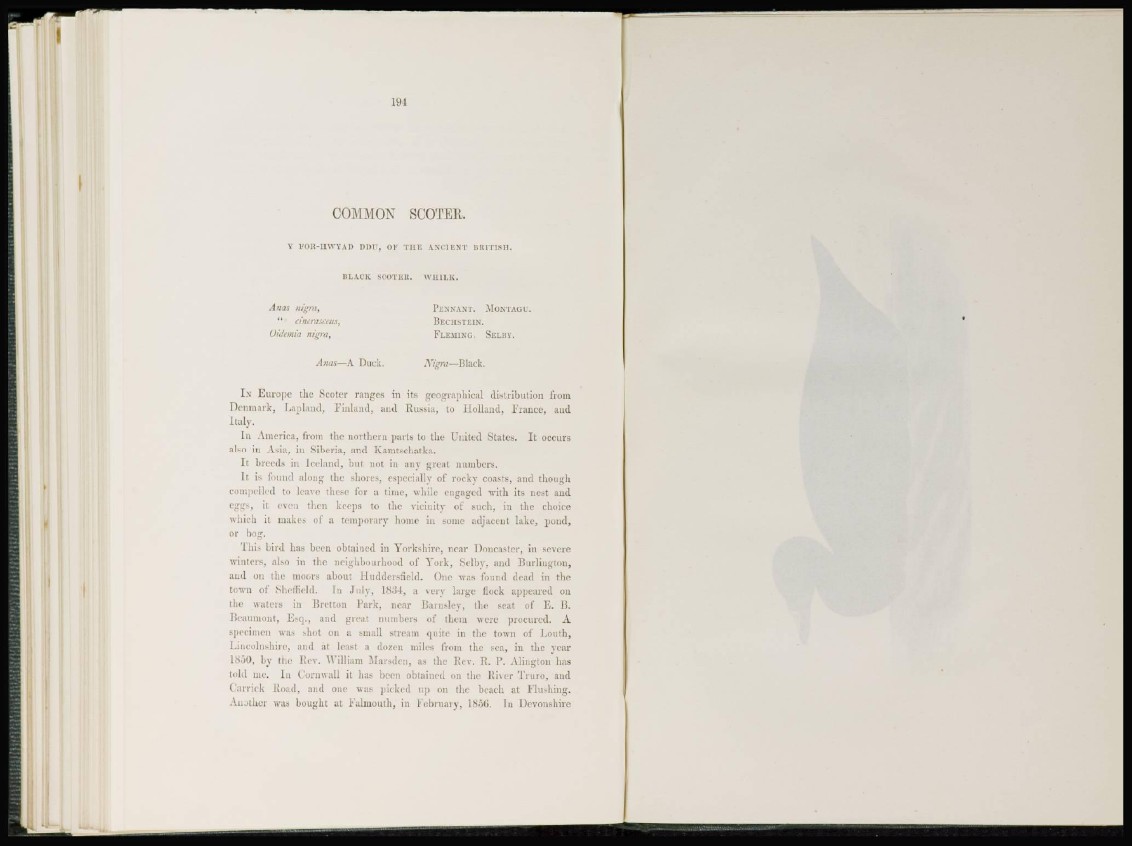
l i li
COMMON SCOTER,
Y FOB-HWTAD D1)V, OF THE ANCIENT BRITISH.
BLACK BOOTBB. wiiILK,
Anas nigra, PENNANT. MONTAGU.
" ct'mrasnus, BECTISTEIN.
Qidemia nigra, FLEMING . Sklbt.
Anas—A Duck. Nigra—Black.
IN Europe the Scoter ranges in its geographical distribution from
Denmark, Lapland, Finland, and Russia, to Holland, France, and
Italy.
I n America, from the northern parts to the United States. It occurs
also in Asia, in Siberia, and Kamtschatka.
It breeds in Iceland, but not in any great numbers.
It. is found along the shores, especially of rocky coasts, and though
compelled to leave these for a time, while engaged with its nest and
eggs, it even then keeps to the vicinity of such, in the choice
which it makes of a temporary home in sonic adjacent lake, pond,
or bog.
This bird has been obtained in Yorkshire, near Doncaster, in severe
winters, also in the neighbourhood of York, Selby, and Burlington,
and on the moors about Huddersfield. One was found dead in the
town of Sheffield. I n J uly, 1SJ4, a very large flock appeared on
the waters in Bretton Park, near Barnsley, the seat of E . B.
Beaumont, E s q . , and great numbers of them were procured. A
specimen was shot on a small stream quite in the town of Louth,
Lincolnshire, and at leasl a dozen miles from the sea, in the \ ear
1850, by me Rev. William Marsden, as the Rev. R. P. Alington has
told me. In Cornwall it has been obtained on the River Truro, and
Carrick Road, and one was picked up on the beach at Flushing.
Another was bought at Falmouth, in February, 185G. In Devonshire